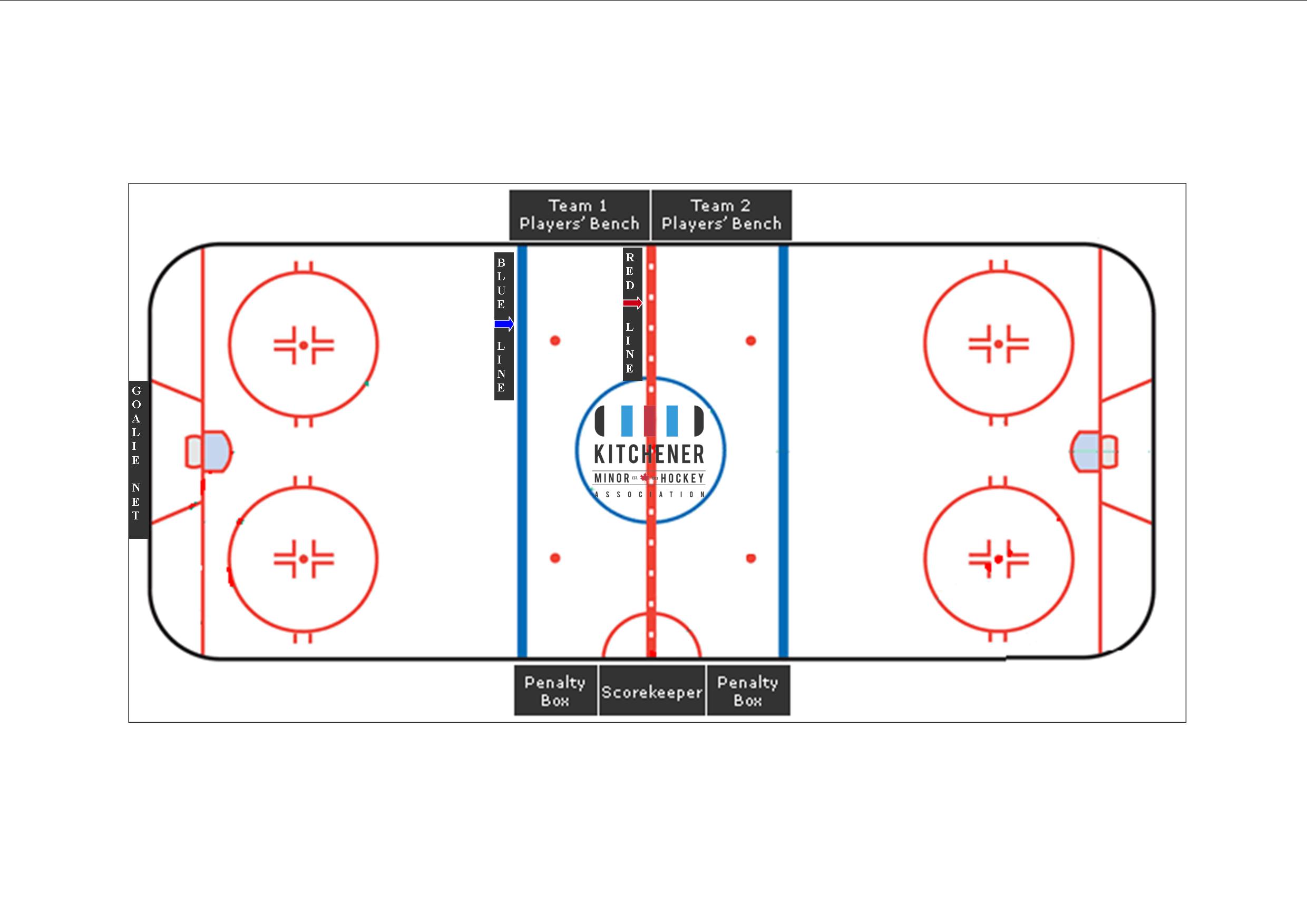Rules Of Hockey:
The objective of hockey is to score more goals than your opponent on their goaltender and to have fun!
Offsides:
Icing:
- When a player shoots the puck across the center red line and past the opposing red goal line. Icing is not called if the player's team is killing a penalty, a teammate of the player shooting the puck touches it before a player from the opposing team, the defending goalie touches the puck first or if the puck travels through the crease (semicircle of blue paint at the "mouth" of the goal) on its way to the red line.
Overtime:
- If the game is still tied at the end of regulation, there is a sudden victory overtime period; meaning, if a goal is scored during this period, the game is over.
- During the NHL regular season, the overtime period is five (5) minutes long with 4-on-4 hockey. If the game is still tied after the overtime period, it results in a shootout.
- In NHL playoff hockey, the sudden death overtime period(s) is twenty (20) minutes long with 5-on-5 hockey. The game will continue until there is a goal scored, there is no shootout.
Shootout:
- If the game is still tied after the overtime period, a shootout ensues. Each team will have three (3) shooters. The team with the best out of three shots will win the game. If after the three shooters the game is still tied, its moves to a sudden death shootout; meaning the next shootout goal wins (if the team who chooses to shoot first scores, the team that shoots second has the chance to redeem themselves, if they miss, the game is over).
Power Play:
- When a team is penalized, and depending the severity of the penalty, the opposing team is rewarded a power play; meaning the other team will be short handed for a distinct amount of time (refer to penalties).
- If the team on the power plays gets a goal, the power play is now over.
- If the short handed team scores while killing the power play, the power play is not over.
Penalty Shot:
- A penalty shot is rewarded to the offensive player if he or she is on a breakaway and the defending obstructs the player enough so they do not get a shot off. Obstructions such as hooking, slashing, tripping, and holding. Also, if the goaltender throws his or her stick at the puck or players to prevent a goal, the player will be awarded with a penalty shot.
- On a penalty shot, the shooter starts from centre ice and is only allowed one shot, even if there is a rebound.
Face-off:
- A face off ensues every time there is a stoppage of play. A face off occurs in the centre of the rink at the beginning of each period and after every goal.
Shots on Goal:
- A shot on goal (SOG) is when the shot results in a goal or a save by the goaltender.
- A missed shot results the shot missing the goal completely or hitting the goal posts.
Points:
- Points are rewarded to players who score and assist (primary and secondary) the goal.
- Two points (2) are awarded to the winning team in the standings, while the losing team gets zero (0)points, unless they losing team loses in overtime or a shootout then they are awarded one point in standings.
Lines:
The center line divides the ice in half lengthwise. It is used to judge icing, meaning that if a team sends the puck across the center line (red line), blue line and then across the goal line (that is to say, shoots or dumps the puck past the goal line from behind their own side of the center line) it is said to be icing. It is a thick line, and in the NHL must "contain regular interval markings of a uniform distinctive design, which will readily distinguish it from the two blue lines." When discussing differences in the rules of the game, it is often said that a game is played with no red line. This simply means that there is no two-line pass violation. The center line is still used to judge icing violations.
There are two thick blue lines that divide the rink into three parts, called zones. These two lines are used to judge if a player is offside. If an attacking player crosses the line into the other team's zone prior to the puck crossing, he is said to be offside.
Near each end of the rink, there is a thin red goal line spanning the width of the ice. It is used to judge goals and icing calls
